Over the years I’d heard a lot about Lapsang Souchong. It was the name that attracted me first, to tell the truth. Lapsang Souchong. Such a treat for the vocal cords. Lapsang Souchong. Lapsang Souchong. Lapsang Souchong. (It made me feel sophisticated just saying the name.) So anyway, I’d read about how this tea embodied the essence of refinement, how delicately smoky it tasted, how it was loved by the top connoisseurs of tea in general, and so on. In the past I was not drawn to the idea of tea at all, even with milk and sugar – and the idea of drinking tea that had neither milk nor sugar seemed incomprehensible. Not even a genuine tea-connoisseur favourite uncle could tempt me to try drinking tea black.
But of late, since I have been drinking fruit teas and green tea, I thought that
As I poured hot – not boiling, as specified by the instructions – water on the teabag in my mug, my senses were assailed by the lovely smoky aroma. Alas, the tea itself was rather too bitter for me. Evidently my palate (please note this – my palate, not me) had not reached the level of sophistication required to drink Lapsang Souchong. (Perhaps I should have used a fine bone china cup from which to drink the tea, rather than a Tesco mug that had “Tea Coffee Tea Coffee” printed all over it in striking black and white stripes? Ah well, we will not make this discovery in a hurry, and enquiring readers will just have to wait till I can muster the willpower – and the requisite refinement of the five senses - to try Lapsang Souchong again. From a posh china cup.)
So anyway, the remaining 39 tea bags sat in their box in a drawer, perfuming the air delicately with their smokiness whenever the drawer was opened, for a couple of weeks before I had my next *trumpet fanfare* idea. (Yes, folks, this was Part 2 - the innovative part – of the original brilliant idea.)
I have liked the flavour of smoked food, ever since, years and years back in a Maori village in New Zealand, I tried it for the first time at the traditional “hangi” or feast. (That’s another story, which you can find here.) So I was suddenly struck by the thought that I could use a Lapsang Souchong tea-bag while cooking some soya beans (the dried kind, after first soaking the beans overnight). Two birds with one stone, and all that... I could use up the tea bags eventually, and hopefully the lovely smoked flavour would infuse into the soya beans.
Uh...
That innovative idea? Innovative, perhaps, but sadly not brilliant in its outcome. The smoky taste did NOT get into the beans or the cooking liquid, but the tea did turn the beans a beautiful (NOT!) brownish grey. Overall, I would say that pressure-cooking the beans with a Lapsang Souchong teabag did not add anything in the way of extra flavour, but also, let it be said, it did not detract from the taste of the beans. I was going to make a superbly and subtly smoky soya bean chole sort of thing, but in the event, I decided to do something else with the tea-cooked beans.
And that is how this sesame soyabean pulao happened. Looks quite nice, doesn't it? It tasted as good as it looks - and I personally believe it looks verrrrry good!
Mind it!
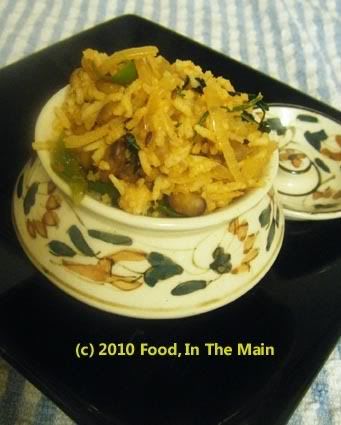
Recipe for: Sesame soyabean pulao
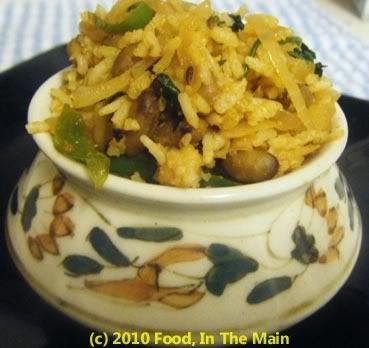
Ingredients:
4-5 cups cooked basmati rice, cooled
1-1/2 cups cooked soyabeans
2 medium onions, sliced thin
4-5 green chillies, sliced into strips (to taste)
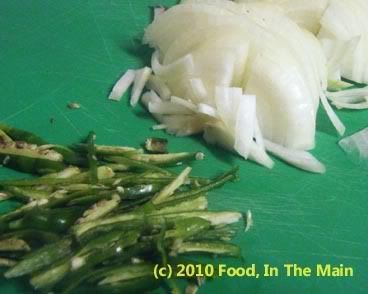
3 tbsp sesame seeds, crushed lightly in a mortar & pestle
1/4 cup concentrated tomato puree
1" stick cinnamon
1 star anise
1 green cardamom
1 black cardamom (optional)
2 tsp cumin seeds
1 tbsp oil
Salt to taste
2 tbsp chopped coriander for garnish
Method:
1. Heat the oil in a pan big enough to comfortably take 4 cups cooked rice. When the oil is hot, add the cumin seeds, cinnamon stick, cardamoms and star anise. Let them brown gently (about a minute) till their aroma is released.
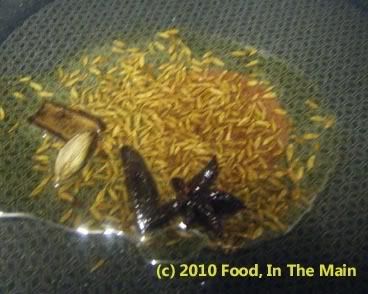
2. Now add the sesame seeds and let them fry till they begin to turn a pale brown.
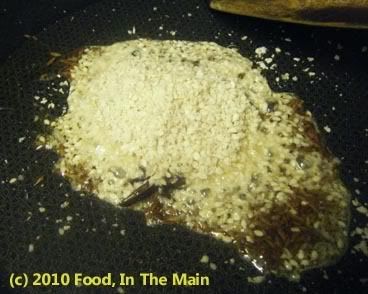
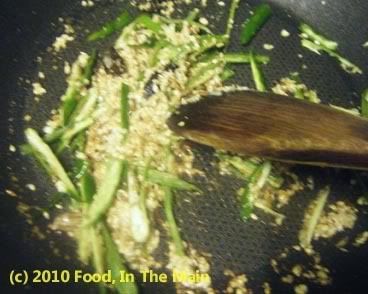
3. Add the onions and stir fry on medium heat till the onions begin to turn soft.
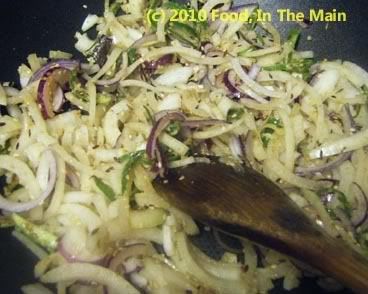
4. Pour in the tomato puree.

5. Mix it in well,
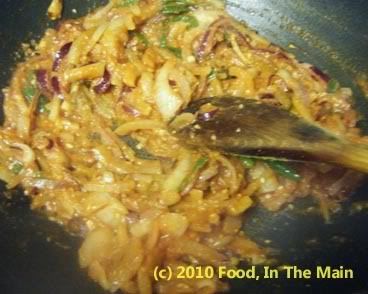
then add the cooked soyabeans.

Stir them in gently till they are completely covered with the onion masala. The masala should not be runny or watery, or the pulao will not taste right.
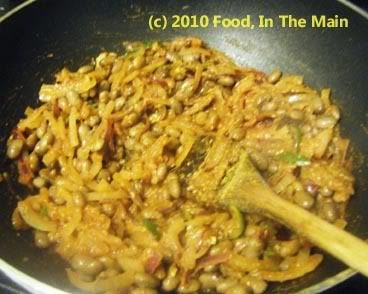
6. Add the chopped coriander and stir it in, along with salt to taste.

7. Now mix the cooked rice with the soyabean masala, taking care not to break up the grains.
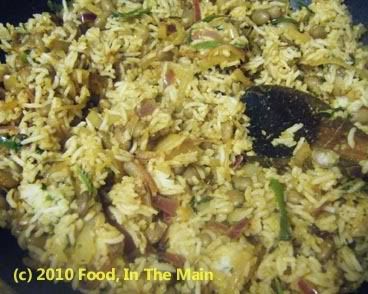
8. Serve hot with any raita.

